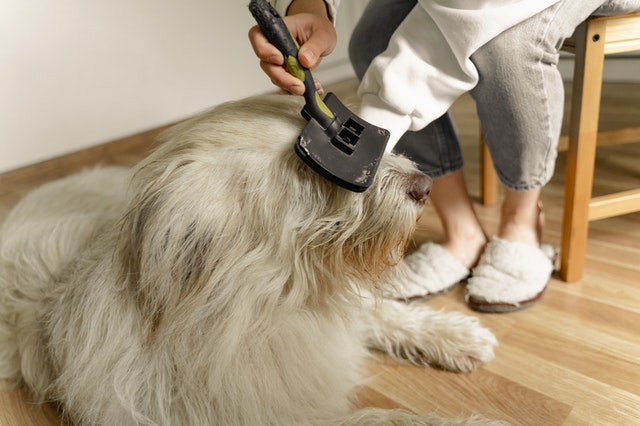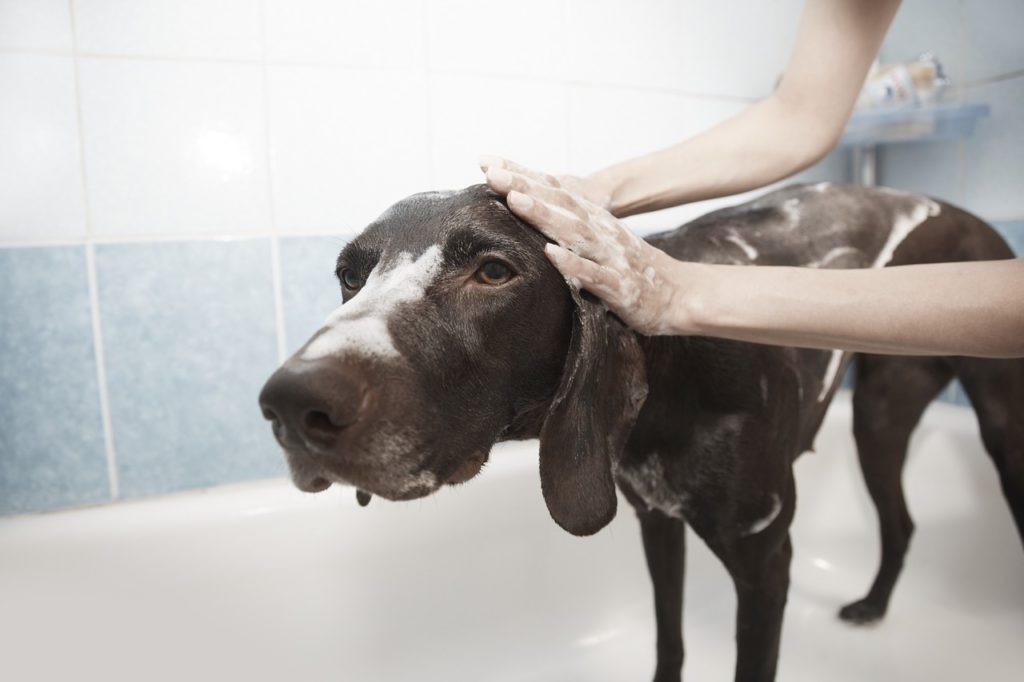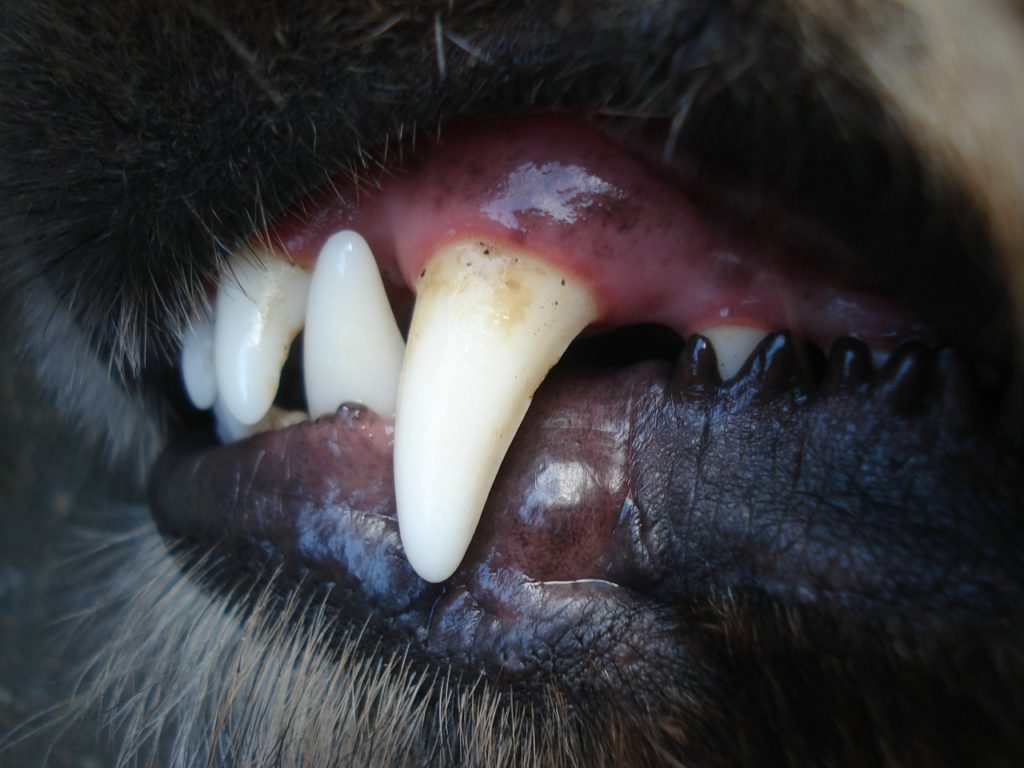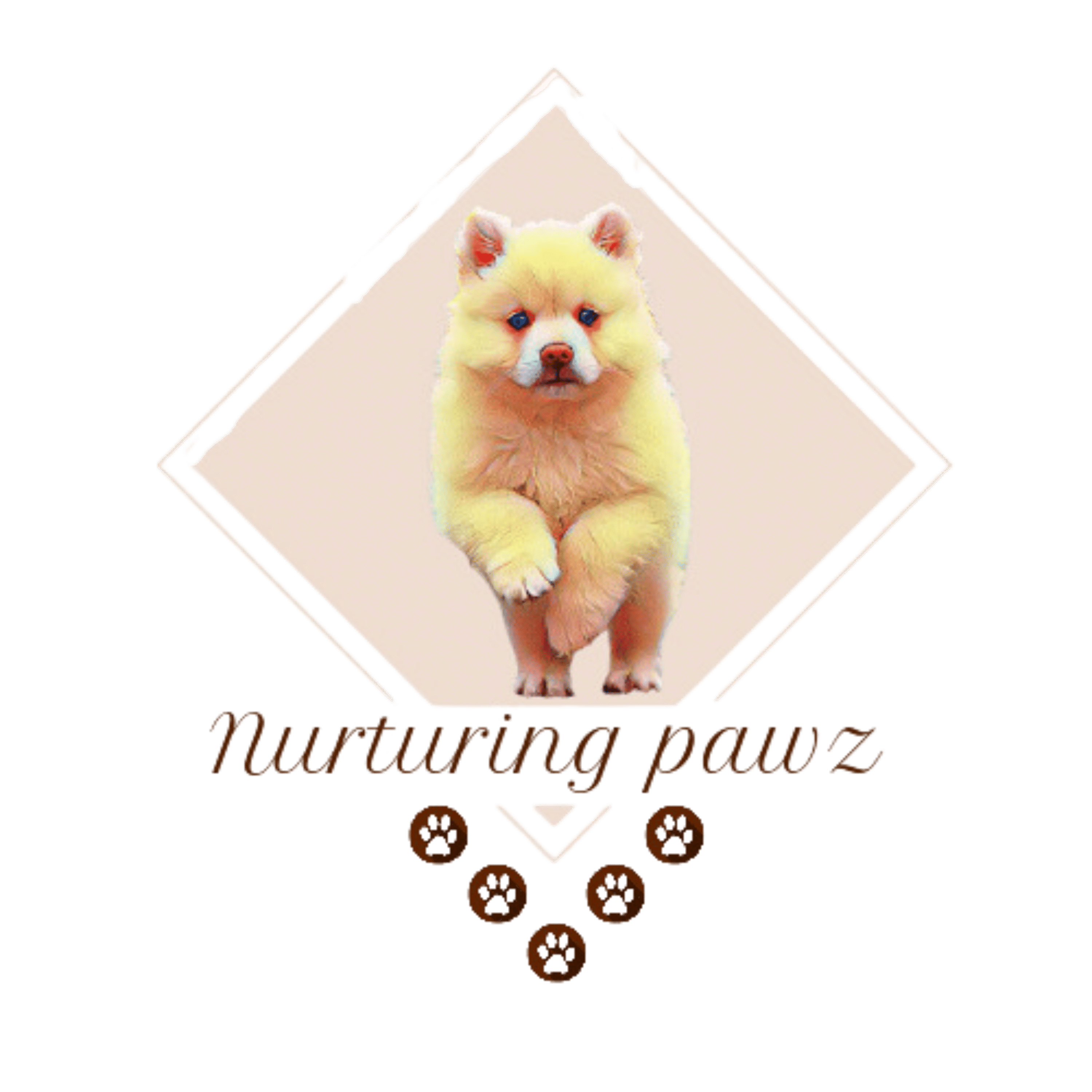As a dog owner caring for your dog is such an exciting experience, you get a lifetime companion that eat, sleeps and breaths. But one often overlooked aspect of dog care is grooming. Many dog owners opt to take their dog to a professional groomer or vet while other try to do it their self. Either of which are okay but if you are one of those special owners that try to groom on your own then you will love this post. Dog grooming 101 – everything you need to know about grooming your dog explains all the essential requirements to properly groom your dog.
Most pets will keep their self relatively clean majority of the time. But as responsible pet owners there are a few instances where we must step in and help keep them optimally groomed. These grooming instances includes Bathing, Brushing, dental care, nail care, paw upkeep, ear care, skin maintenance, amongst others. Let’s first look at how to brush your pet though.
Brushing your pet

The best way to keep your pet’s fur in optimum condition is through consistent brushing or combing. As this helps prevent mattes and tangles, keep their skin clean, removes dirt, and spread essential oils through their fur. As you brush and groom your pet remember to check for common pest such as fleas or ticks.
The type of brushing your pet will require depends mainly on their type of coat. Therefore, we have categorised each type of fur below into 4 main categories.
Short Fur pets
For dogs with short shinny fur, we recommend that you brush once per week using both a bristle and rubber brush. The rubber brush is used to remove dirt and other small particles while the bristle brush removes dead fur.
Dense fur pets
These are dogs with fur that matt easily if not care for properly, like Akita’s or huskies. Just like with short fur dogs brush these types once per week also and additionally combing their tails. For dense fur dogs use a bristle as well as a slicker brush and optionally a dog fur comb.
Silky fur coat
Dogs with long silky fur such as the Cocker Spaniel, fur can easily become matted if not cared for properly. Thus, some sort of daily brushing is required to keep them looking their finest. First, you will need to use a slicker brush to detangle. Then with a bristle brush carefully brush through their fur. Lastly comb through their silky fur with a dog comb and trim excess hair where necessary.
Woolly coated fur
These types of dogs often sport a variation of coats mixed, such as curly, wavy mixed with some straight fur. Some dogs with wool fur include Poodle, Maltese, Bichon Frise, and other mixes that involves poodles. Regular brushing is required for these types. Begin by detangling fur with a detangling comb, then use a slicker brush to groom coat ta shine finish.
Bathing dogs

Dog grooming 101
Some pet owners bathe their dogs as often as every month, while others wait a couple of months. But, but we at Nurturing Pawz recommend that you bath your dog at least once quarterly (every three months). Unless otherwise necessary. Because your dog’s skin could become dry or irritated due to loss of essential oils.
Steps to bathing your dog
Follow these dog grooming steps below to effectively bath your pet while ensuring that they are safe.
- Preparation – begin by brushing your dog to get rid of all loose and dead fur.
- Place your pet in a sink or for tub with a couple inches of lukewarm water. For larger dogs place them in a selected area of the yard
- Use a hose or small bucket to soak your dog’s fur (this helps in spreading the shampoo later)
- Pour shampoo into your hand or directly on dog’s fur and thoroughly spread shampoo slightly massaging each area. Start from your pet’s head all the way to their tail.
- Rinse and repeat above step until your dog is as clean as you want.
- Completely dry your pet with a drying towel or pet dryer.
Important note: Avoid spraying water directly in your dog’s eyes, ears, or nose as these are sensitive areas.
How to select a shampoo for your dog
While human shampoos are not particularly toxic for pets, we recommend that you use a shampoo specially designed for pets. For the best results choose a shampoo that is specially made for your type of dog. For example, if you have a Pomeranian use a shampoo formulated for small dogs with dense long fur. This not only ensures that you are using a safe shampoo but one that will have beneficially elements for your dog. If unsure speak with your veterinarian to find out what type of shampoo is best for your dog.
Protecting your dog’s sensitive areas
Eyes
To protect your pet’s eyes from irritants while bathing, use a sterile eye lubricant.
Ears
Place large cotton balls both of your dog’s ear to prevent excess water entering their ear canal.
Additionally, attach a sprayer to your hose that grant you greater control over the water while rinsing your dog.
Note: Some pet owners suggest that you bypass shampooing your dog’s head and instead use a wet towel to thoroughly clean specific areas.
Dental care

Dog grooming 101
According to AAHA most pets develop some degree of dental disease by age 3 or 4. A sad fact but that only illustrates how important it is to maintain your pet’s dental hygiene. Fortunately, you can easily care for your dog’s dental health by frequently brushing your dog’s teeth and maintaining a healthy diet. Additionally chew toys are also effective at maintaining your pet’s dental health.
How often should I brush my pet’s teeth?
We at Nurturing Pawz recommend that you brush your dog’s teeth at least twice a week for best results. Also, consistently check your pet’s teeth for any abnormality or unusual odors and visit your vet for check-ups where necessary.
How to train your dog to be comfortable with brushing
You may be thinking “brushing is nice, but my dog fights me when I try”. Follow the steps below to gradually train your dog to be comfortable with brushing.
- To begin do not use a toothbrush or toothpaste yet. Instead use your finger to softly massage your pet’s teeth simulating brushing motions for about a minute. Repeat this at least once per day for a couple of weeks gradually increasing your motions to include the gums.
- When your pet becomes comfortable with the step above begin adding a small amount dog toothpaste to your finger. This will help your pooch to become acquainted with the taste.
- Next, it’s time to insert a toothbrush into the equation. Use a pet toothbrush instead of a human toothbrush as they have softer bristles. Don’t want to use a traditional toothbrush? Try using a toothbrush glove that you can wear on your finger to brush and clean your dog’s gum.
- Brush teeth in circular motions and clean each section of your dog’s mouth. Pay particular attention to the corner teeth that are closest to the cheeks because they are usually the dirtiest.
- By now your dog should be accustomed to brushing.
Nail care

Often overlooked are pet’s nails, however nails need adequate attention too. If left unkept overgrown nails can hurt your pet or cause injuries. Therefore, you should ensure your dog’s nails are clipped often. But you may be wondering how often should you cut your pets nails? The general rule of thumb is to cut their nails just before it grows long enough to touch the ground. Or whenever you noticed your pet’s nails keep getting caught in the carpet or other soft surfaces.
What nail clippers are the best for dog grooming
Choose a nail clipper that is designed for dogs, because human nail clips will not be able to cut your pooches hard nails. There are two main types of dog nail clippers, the scissors type, and the guillotine type. They both cut dog nails fast and efficiently. So, its up to you to choose the type that most comfortably grips your hand or liking.
How properly to clip your dog’s nails?
Clipping your dogs’ nails can be difficult for the first time so here is a guide to help you. Follow the steps below.
- Inspect you’re your dogs’ feet for dirt or foreign particles by spreading each toe. Be careful not to spread too widely as it could become painful for your pup.
- With one hand hold your dog’s toe securely yet gentle enough not to cause distress
- With the other hand hold your clipper at and angle than resembles the natural curve of the nail. Set the clipper so that you are cutting from top to bottom.
- Cover a small tip of nail that you wish to cut off. Be careful not to trim off too much at a time because you do not want to accidentally cut the vein.
- Cut a little bit of nail until you reach close to the darker area of the nail. This is the area that contains the nail. For dogs with black nails this area won’t be visible so you will have to make an eye judgment. If unsure its best to only clip a small amount.
- Repeat until each nail is cut
- Finish off with a nail file or emery board to smooth off the edges.
Note: If you accidentally cut into the skin of the nail and bleeding occurs. Then apply some corn starch or styptic powder to the area to help stop the bleeding.
Now you know all about pet nail care, but what about their paws?
Paw care and upkeep
Dog grooming 101

Dogs sweat through their paws and not their skins like we do, so its important to inspect them for any abnormalities. Not only that but did you know you dogs paws also provide padding that helps protect their joints and bones? Yes, they do, that is why its important that you check your pets’ paws frequently for imperfections or wounds.
Paw upkeep
To keep your pet’s paw in optimal condition check for intrusions or debris and remove them with a tweezer where necessary. Additionally, we recommend that you trim the fur between each toe until they are inline or slightly shorter than the pads. This helps prevent unwanted matting and odors.
Hot and cold weather paw care
During extremely hot times particularly during summer avoid walking your dog on extremely hot surfaces (sand or asphalt). And watch out for blisters or minor burns on your pet’s paw. If you dog’s paw shows signs of minor burns or blisters apply an antibacterial wash and cover loosely with bandage. If wounds are more severe visit your vet immediately.
Conversely during cold winter times beware of cracking or chaps to your dog’s paw. To prepare your pet paws for the coming winter you can wash their paws in lukewarm water to remove any contaminants. And apply some Vaseline before each walk. Some owners also elect to let their dogs wear winter dog boots when going out in the snow.
Note: Think of your dog’s paw as the equivalent of our feet. If a surface would be too hot or cold for us then most likely it will be the same for them.
Paw care 101
To help care for your dog’s sensitive paws treat them to a Paw massage. Use a dog paw moisturizer or cream and massage it soothingly onto each pad on the bottom of their paw. Be sure to rub between each toe also, your pet will love this extra care and attention.
Skin care
Every dog owner takes pride in owning a dog with a shiny healthy coat that just oozes confidence. But what happens when a dog has skin problems and how exactly do you properly care for their skin? Excessive scratching, licking, and chewing on areas of the skin can be early indicators of skin problems for your dog. The most popular culprits include allergies, stress, external parasites, and more.
Your dog’s skin is an indication of her overall health, so it’s important to keep it in prime shape. When a skin problem occurs, your dog may respond with excessive scratching, chewing and/or licking. A wide range of causes—including external parasites, infections, allergies, metabolic problems and stress, or a combination of these—may be to blame. Let’s look at each of the potential causes of skin problems in dogs.
Potential causes of skin problems in dogs
- Dog grooming products – Some shampoos and other grooming products can irritate your dog’s skin. Therefore, it is important that you choose the right shampoo for your type of dog.
- Fleas – these are tiny blood sucking parasites that can irritate your dog. Some dogs are even allergic to droppings and saliva from fleas and respond with aggressive scratching. Additionally, some flea treatment products may cause irritation to your dog’s skin as well. It’s important that you speak with your vet before using certain products on your dog.
- Skin infections – Occurs when the skin is damaged by other skin disorders or irritants overtime.
- Hormonal problems- Hormonal imbalances in dogs can lead to patches in fur, skin color changes and other negative issues. To combat these types of skin irritants you will need to see your veterinarian.
- Food allergies – Some ingredients in dog food can cause dogs to develop allergies which leads to skin problems. Watch out for these changes whenever you switch or introduce your dog to a new type of food.
Treatment
Unlike other dog grooming care issues for skin issues and treatments you will need to speak with your veterinarian. They will be better able to diagnose each skin problem through various test and procedures. And recommend the best solutions or steps you should take to correct it.
Summary
Dog grooming 101
Grooming your dog plays an essential role in not only the appearance but also the health of your dog. Therefore, you should follow steps above and make time to frequently care for your dog’s skin, paws, teeth, fur and more. Check out our essential dog grooming supplies to see all the tool mentioned above.
If you found this article helpful, please share with someone else that loves their dog. Let’s make the world safer for our pets.





